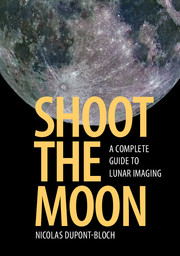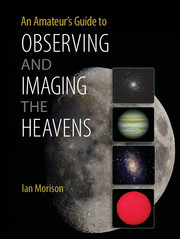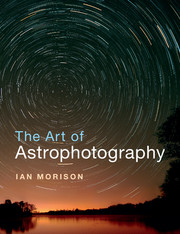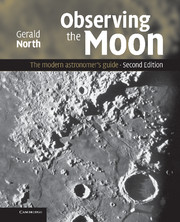Shoot the Moon
The Moon boasts an unexpected variety of landscapes - including volcanic features, sinuous valleys and ghost craters - which are readily visible from Earth. This practical guide explains and demonstrates how you can capture impressive images of our nearest neighbour in space using a variety of different techniques. As the first guide to be dedicated to modern lunar imaging, this volume offers an in-depth and illustrated approach to common optics, the essentials of digital images, imaging devices, and image processing software. Even in light-polluted areas, the countless features and finest details of the Moon can be captured by following the instructions in this comprehensive and accessible guide. Covering equipment ranging from smartphones and DSLRs to specialist planetary cameras, whether you are a novice without a telescope, an amateur developing your skills in imaging, or an experienced astrophotographer, you will benefit from the hints, insights and expertise within.
- The first and only modern guide dedicated to all forms of digital lunar imaging, replete with numerous techniques, hints and tips
- Describes how to use equipment from everyday technology, such as your smartphone or DSLR (with and without a tripod and telescope), through to specialized lunar and planetary CCD cameras mounted onto common types of amateur-level scope
- Guides you through all types of imaging the Moon, from wide-angle views and lunar eclipses to highly magnified close-up views, with in-depth guides on getting the best resolution for your equipment and Moon-specific image stacking and processing
Reviews & endorsements
'Dupont-Bloch, an author and amateur astronomer, reminds the reader that the moon is a beautiful object with a huge variety of geologic features that can be seen from even the most light-polluted urban location … Have a smartphone or a cheap webcam? If yes, then one is ready to shoot the moon. Thinking about buying a DSLR camera or interested in a high-end CCD imager? This book will help one make the right choice. Want to learn how to make images with the best focus, get good contrast and color balance, take stereo images of the moon, find the Apollo landing site, or even shoot video of lunar impacts? This book shows 'how-to'. The work will be most useful to the serious amateur, but novices will find enough background to get up to speed with a little help from the numerous references and excellent lunar charts that are provided.' T. D. Oswalt, Embry-Riddle Aeronautical University, Daytona Beach
'[The book] covers the use of a wide range of equipment in all possible permutations, from phone cameras, consumer cameras, and standard lenses, up to the usual amateur CCD and CMOS cameras coupled to equatorially-mounted telescopes. The subject is treated with some humour (or quirkiness), with features like tables of methods where levels of difficulty are represented by social-media-type 'smiley' icons … This is the most thorough and detailed book covering the whole subject of lunar imaging I have yet seen. …' David Arditti, The Observatory
Product details
No date availablePaperback
9781107548442
330 pages
248 × 175 × 15 mm
0.69kg
153 b/w illus. 77 colour illus. 13 tables
Table of Contents
- 1. Introducing lunar imaging
- 2. Choosing your imaging equipment
- 3. Adapting your image device to the instrument
- 4. Tuning your telescope for lunar imaging
- 5. Wide-field, lunar imaging
- 6. High-resolution, lunar imaging
- 7. Essential image processing
- 8. Advanced image processing
- 9. Making 3D lunar images
- 10. Measuring and identifying lunar features
- 11. Photogenic features of the Moon
- 12. Naming, archiving, printing and sharing lunar images
- Appendix: maps of the Moon, Lunar 100 and other targets
- Web pages, books and freeware for the Moon
- Figure data
- Index.






